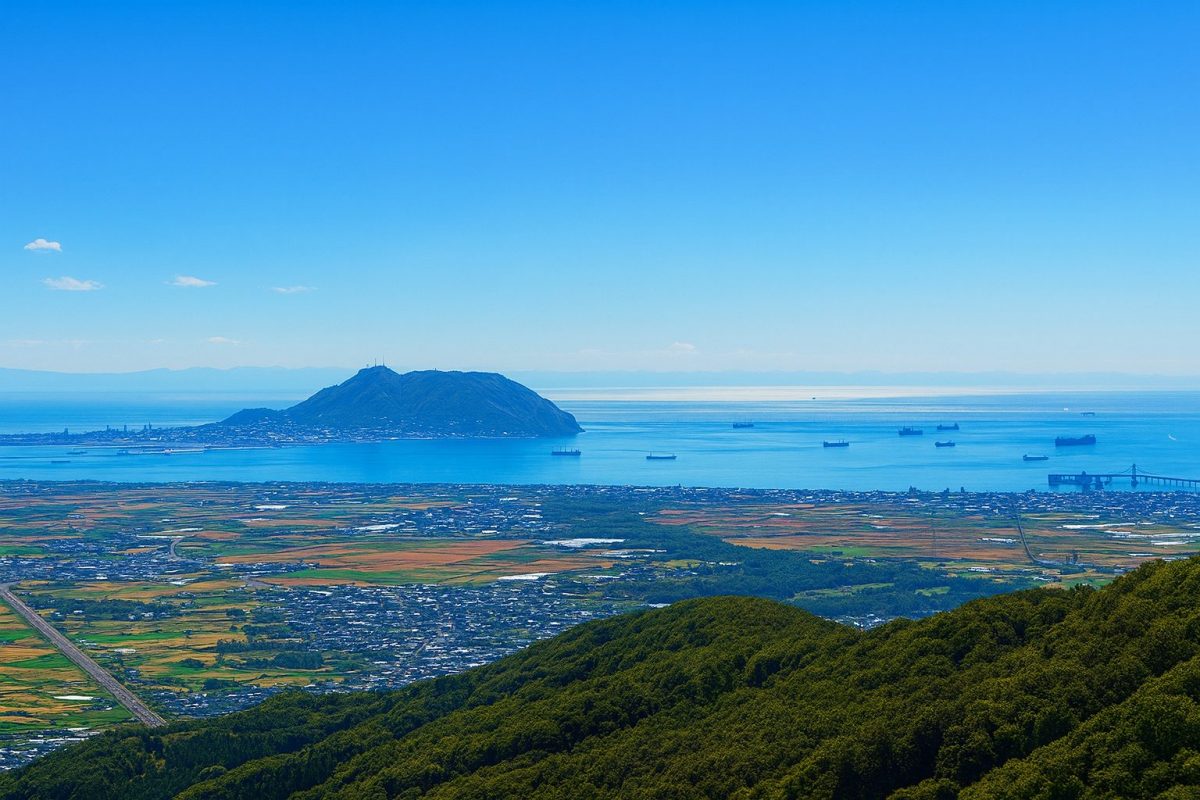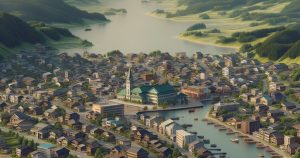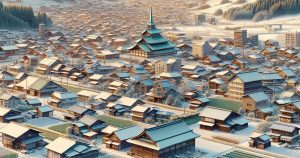| population | 42,432 peoples |
|---|---|
| area | 397.44 km² |
| population density | 107 peoples/km² |
Located in southern Hokkaido on the Oshima Peninsula, Hokuto City was established in 2006 through the merger of Kamiiso Town and Ōno Town. Bordering Hakodate City and facing the Tsugaru Strait and Hakodate Bay, Hokuto enjoys a mild climate and a lifestyle deeply connected to nature. It also serves as the gateway to Hokkaido, home to the Shin-Hakodate-Hokuto Station, the northern terminal of the Hokkaido Shinkansen, which connects Tokyo and Hokuto in about four hours. The city is known as the “Birthplace of Hokkaido Rice Cultivation,” where rice paddies and vegetable fields have long flourished. Local specialties include tomatoes, leeks, spinach, and fresh seafood from the Tsugaru Strait. Hokuto also offers many scenic attractions, such as the historic Trappist Monastery and the Kijihiki Highlands, where visitors can enjoy the magnificent four seasons of Hokkaido. It is a city where industry, culture, and nature harmoniously coexist, representing the essence of Southern Hokkaido.
Culture and Traditions
Since its establishment in 2006, Hokuto City has cherished both its rich natural environment and its deep-rooted traditions. The Trappist Monastery, founded in 1896, is Japan’s first Cistercian monastery, where monks continue to produce butter, jam, and cookies using local agricultural products. In spring, the famous Shidare Sakura (Weeping Cherry Tree) of Houki Temple comes into bloom, attracting visitors from all over Japan. During summer, festivals such as the Hokuto Summer Festival and the Hokuto Jinya Sakura Festival bring locals together to celebrate the season with dance and music. In winter, the city hosts events like Hokuto Festa and snow lantern illuminations, transforming the city into a magical wonderland. The people of Hokuto still use the Hokkaido dialect in everyday life, adding a warm and friendly touch to local communication. While agriculture remains its economic backbone, Hokuto has also developed as an industrial city with facilities such as the Technopolis Kamiiso Industrial Complex, symbolizing the balance between tradition and innovation that defines the spirit of Hokuto.
Local Specialties
- Fukkurinko Rice: A premium rice variety developed at the Hokuto Agricultural Experiment Station. It is known for its plump grains, subtle sweetness, and delicate texture, now popular throughout Japan.
- Hokuto Tomatoes: Grown in fertile soil and a mild climate, Hokuto’s tomatoes are exceptionally sweet and juicy, used in local sauces and tomato juice products.
- Hokkai Udo (Japanese Spikenard): A traditional vegetable first cultivated in greenhouses in the former Kamiiso area. Its tender stems and fresh aroma make it a spring delicacy.
- Wild Mountain Vegetables: In spring, the Hachirounuma Park area is filled with edible wild plants such as butterbur sprouts and bracken, which are part of Hokuto’s seasonal cuisine.
- Trappist Monastery Products: Handmade butter, jam, and cookies created by monks at the Trappist Monastery are some of Hokkaido’s most beloved souvenirs.
- Roadside Station “Misogi no Sato Kikonai”: Located about 20 minutes from Hokuto by car, this popular roadside station offers fresh produce and local specialties from Hokuto and neighboring towns.
Annual Events
- Hokuto Jinya Sakura Festival (April): Held at the Tokiriji Jinya Site, where rows of cherry trees bloom around the historic remains of the Matsumae clan’s outpost.
- Hokuto Sakura Corridor (Late April): A light-up event connecting Houki Temple, the Oono River, and the Seikawa Jinya area, where night cherry blossoms create a romantic atmosphere.
- Hokuto Summer Festival (July): A large-scale community celebration featuring traditional Bon Odori dance, taiko drumming, and local food stalls.
- Hokuto Industrial and Tourism Festival in Hachirounuma (September): A local fair where visitors can enjoy regional food, stage performances, and direct-from-farm produce.
- Mobetsu Salmon Festival (November): Held along the Mobetsu River, this popular event lets participants catch salmon by hand and purchase fresh seafood directly from fishermen.
Access
- By Air: Flights are available from major cities across Japan to New Chitose Airport. From there, take the JR line toward Hakodate for about three hours and get off at Shin-Hakodate-Hokuto Station.
- By Shinkansen: The Shin-Hakodate-Hokuto Station is the terminus of the Hokkaido Shinkansen, connecting directly to Tokyo in approximately four hours.
- By Car: Accessible via the Hakodate-Esashi Expressway through the Hokuto-Chuo IC or Hokuto-Oiwake IC. From Sapporo, it’s about a four-hour scenic drive.
- By Bus: Regular bus services operate from Hakodate Station and Hakodate Airport to various areas within Hokuto City.
- By Ferry: Ferries from Aomori and Ōma arrive at Hakodate Port. From the port, it’s about a 20-minute drive to central Hokuto City.
Tourist Attractions
- Trappist Monastery – Japan’s first Cistercian monastery, known for its red-brick architecture and scenic poplar-lined avenue.
- Kijihiki Highlands Panorama Observatory – Offers breathtaking views of Mount Hakodate, Onuma Quasi-National Park, and the Tsugaru Strait. A campground is also available.
- Hachirounuma Park – A beautiful park famous for cherry blossoms in spring and colorful foliage in autumn; ideal for picnics and photography.
- Houki Temple – Home to a 300-year-old weeping cherry tree that blooms spectacularly each spring. The temple grounds are illuminated at night.
- Matsumae Clan Tokiriji Jinya Site – A nationally designated historic site, preserving the remains of an Edo-period fortification and ancient samurai heritage.








